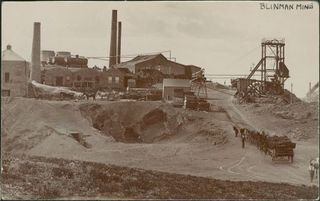Henry Martin

Henry Martin emigrated to South Australia in 1839 and initially entered into partnership with his brother Thomas in a butcher shop on Hindley Street, Adelaide. Thomas had arrived on the Tam O'Shanter which reached Holdfast Bay in November 1836.
Robert Archibald Fiveash (23) and his young brother William (13) arrived as an assisted migrants on The Planter, a schooner of 120 tons, at Holdfast Bay in May 1839, after a six month voyage from London. His first venture was also in a butcher shop in Hindley Street. He may have worked for the Martin brothers, or become a partner. He certainly had an early association with them.
Subsequently Robert joined William in opening a drapery business, but he did not enjoy the constraints of life in a shop. Robert was soon roaming and prospecting as far north as the Flinders Ranges. This resulted in the dissolution of his draper shop partnership in January 1858, the documents being witnessed by Henry Martin. Henry Martin and Robert Fiveash both turned their interests to mining matters and became heavily involved. They travelled around the mid north of South Australia, the far north and into the Flinders Ranges, buying numerous mining leases and on occasions entire small mines. It seems that the two were business partners and that Thomas Martin also had a financial share in those operations.
They were involved with the Yudnamutana and Blinman copper mines in particular. Both were present in August 1862 when work at the new Blinman mine was officially opened in the presence of several well-known mining identities. It became the largest producer and longest operating mine in the Flinders Ranges.
As the working proprietor, Henry Martin was the driving force in establishing the Blinman mine. Before the end of that first year he put a gang of men to work to make the necessary cuttings and clear a new line of road through the Brachina Gorge. This made it so much easier for the drays to reach Port Augusta that it saved four days on the round trip, and reduced the cost of carting ore to the ships from £5 to £4 per ton. He also purchased a large stone-crusher to make each dray-load more compact. The following year a smelting works was built near the site which gradually produced better grade copper ingots.
{{#invoke: Gallery | gallery}}
At this stage, a major concern for Henry Martin was to ensure that ore from his Blinman Mine could be shipped to the markets in Britain, and to minimise the cost of transport. This co-incided with Captain David Bruce’s plans to build a new clipper ship expressly designed to cater for the current passenger and goods trade between the colony and the ‘mother country’. Seeing an excellent chance to exercise a level of control over the use of a ship and its freight charges, (and also recognising an investment opportunity), Henry pledged to take a quarter share in the City of Adelaide.
When the City of Adelaide made her maiden voyage in 1864, she unloaded at Port Adelaide through November, then moved to Port Augusta to pick up copper ore in December. Heavy rain in the Flinders Ranges made it quite difficult to get the drays through from Blinman, and only 25 tons could be brought down in time before the ship had to resume its schedule and return to Port Adelaide to prepare for the trip home.
{{#invoke: Gallery | gallery}}
In February 1863, Henry and his fellow directors of the Yudnamutana and Blinman Mining Company sent six wagons and drays filled with green boulders of copper carbonate ore to Adelaide where they were paraded through the town with all ceremony. With the company’s flag flying, and preceded by Barton’s Circus band with their clown riding in front, the procession moved from the railway station and down King William Street to a halt at the Stock Exchange. It next moved on to stop outside the Government Offices on Victoria Square, before continuing through the principal streets of the city. Naturally it attracted a large crowd of spectators, and was followed by a hoard of children. This exercise apparently was designed to attract investment money, but it is doubtful if the general public could see the point.
In 1867 Robert Fiveash was appointed South Australian Superintendent for the Yudnamutana Company (headquartered in Mansion House, London) managing their copper mines at Blinman and Yudnamutana.
Profits from copper mining have always involved a struggle to keep the costs of production and transport below the fluctuating price for the metal. For the Blinman mine, this became increasingly difficult as it grew bigger and became more sophisticated, and for six years in a row no dividends were paid to shareholders. By 1869 wood-carting contracts were being suspended and wages were being reduced. Facing problems with underground water and sulphide ore as depths increased, as well as financial difficulties, the mine struggled on until it closed in 1874. There were three unsuccessful attempts by others to revive the mine over the next 30 years.
Henry Martin may have seen these events coming, for he retired to live in comfort in London in the mid-1860s. He appointed Robert Fiveash as business manager of his South Australian interests.
His brother Thomas Martin became one of the city's most prominent businessmen and freehold property owners. He returned to Britain following the death of his first wife in 1854, and died at his home near Brighton in Sussex in 1898.
In his will he bequeathed much of the wealth and property that he had acquired in South Australia to the Adelaide Children’s Hospital. It has been estimated that the bequest generated some £50,000 to £60,000 for the institution - in current terms this would amount to around $6 million. This income helped the Hospital through the dark days of the Great War and the Great Depression.
References
{{#invoke:Navbox|navbox}}